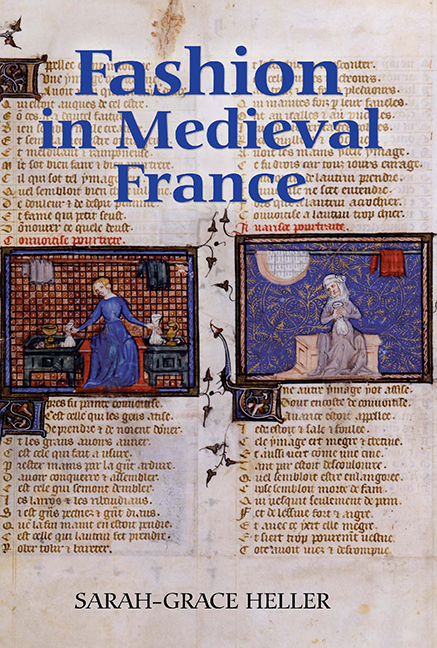Book contents
4 - Words for Fashion
Published online by Cambridge University Press: 13 April 2017
Summary
Ipsa res verba rapiunt.
Things seize words.
(Cicero, De finibus 3.5; quoted in Montaigne, Essais 1.26).One important sign of a concept's existence is the presence of words to describe it. This is particularly true of fashion, where real objects only gain their ephemeral “fashionable” value through a system of public appearance and evaluation, as described in criteria 3 and 7. This chapter takes a philological approach to the existence of a fledgling thirteenth-century fashion system. It looks at the evolution of a particular set of terms, specifically cointe and its derivatives, towards their close association with desirable appearance, studying examples of their usage in depth in a variety of Old French and Occitan texts. Expressions of fashionability are not necessarily obvious in the medieval corpus. This fits Barthes’ observation that the designation à la mode is rarely expressed explicitly. Rather, it remains implicit. An object is equated with “fashionable” merely by being the object of description. Cointe has often been translated with innocuous positive adjectives, which deserves reconsideration. It is precisely this sort of term that is most apt for the connoting the abstraction of fashionable value.
Cointerie in Old French and Old Occitan
The modern connotation of the English word “fashion” dates to the sixteenth century. The French word mode comes to indicate current dress style trends somewhat earlier, by 1482. Does this mean that fashion only came to exist around the time of the Renaissance? Words for fashion, according to fashion's own ephemeral rules, should be expected to come in and out of fashion. Just as today new words are constantly invented to describe a person or object as stylish and desirable – witness “cuckoo,” “fetching,” “groovy,” “hip,” “awesome,” “gnarly,” or “phat” in recent parlance, all borrowed from other registers, popular for a while, and then discarded as “dated” – so we should expect to see borrowing, ephemeral popularity and eventual disappearance in words describing fashion, wherever it exists.
The most salient Old French word associated with concepts linked to fashion, stylishness, and elegance is coint or cointe in the adjectival form, cointerie or cointise as a substantive and se cointir, a verb. Although they will not be addressed directly in this chapter, a number of other noteworthy terms are often seen in conjunction with cointe and notions of style, as the reader will notice in the passages for examination.
- Type
- Chapter
- Information
- Fashion in Medieval France , pp. 95 - 119Publisher: Boydell & BrewerPrint publication year: 2007



